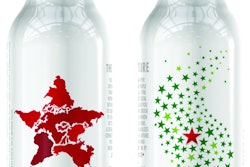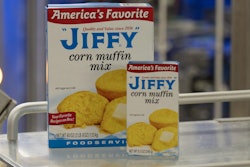Many brand owners are afraid of the perceived high cost of brand protection. Those same brand owners likely pay high insurance premiums on their factories and businesses. The “brand insurance” that brand protection can provide is a minor investment considering the potential loss to brand reputation and the bottom line in the event that consumers lose trust in the product on the shelf.
Getting started on a brand protection path is made even more daunting because of the many tactics and technologies that have proliferated in the past decade. Brand owners have seen many come and go, yet they are still expecting a magic bullet that will solve all their brand protection needs. This will likely never come, so a layered strategy combining several technologies is advisable. To help you choose the best tactics, here are the key factors to consider.
1. Understand the problem. First, step back and understand your brand’s particular situation in its entirety. What are the threats? Is there counterfeiting, diversion, gray market threats, or all of the above? What investment would alleviate or help alleviate the problem? What other gains or ROI could you gain from a brand protection program?
2. Know that every situation is different. A strategy will only be effective if you understand the problem—and the mindset of the perpetrators—first. The best place to start is with the imagined, or real, criminals. What are their motivations? What are the opportunities they perceive? What are they hoping to accomplish? What lengths must they go through to achieve their goals? How easily can they be put off their goals?
3. Be aware of intellectual property rights. Try to quantify the value of the loss to your company in IP terms alone. And know exactly what elements of your brand you “own” both legally and in consumers’ minds. Copycat brands in foreign markets might not be counterfeiting in the strictest sense, but they can still do great damage to the brand reputation just by association.
4. Gauge the urgency. Is counterfeiting tarnishing your brand right now? Might a health risk cause the company to lose substantial market share? What are the worst-case scenarios? Can you prioritize the degree of damage to your brand of potential scenarios? How much prevention or deterrence will protect your IP in the most important markets?
5. Rein in your expectations. Brand protection is more about deterrence than prevention. It’s not necessarily about crime with a capital “C.” Usually, the goal is not to lock up perpetrators around the globe and prevent future crime. That is most often an unreasonable goal. It’s more about criminology, understanding the criminal, and applying situational crime prevention or deterrence. The goal is to disrupt the nature of the crime and frustrate the motivations of the perpetrators. Make the effort of the crime more trouble than it’s worth for the criminal.
6. Favor prevention mode over reaction mode. You’ve already lost part of the battle if you’re only trying to react to a past counterfeit incident. You end up targeting a threat too specifically, and wasting investment in one area that would probably be better spent on a broader strategy. Remember, criminals are resilient and highly adaptable.
7. Know the enemies and their environments. The concept of intellectual property can be very different in other countries than what many assume as the norm in the U.S. In some countries, what the U.S. considers a crime may not be a crime—and counterfeiting activities may even be subsidized. Instead, think of the problem as broad-based “fraud,” and as an attack on your company specifically.
8. Consider all the possible enemies. Realize that economic motivations may inspire many possible perpetrators, and try to envision the fraudsters that are threatening your brand the most. The perpetrators may be organized crime or they might be government sanctioned. They might be opportunists looking for one-off payoffs with a fast turnaround, or they might be hobbyists that are just exploring what’s possible. They could even be your own employees looking for a score or looking to settle a score.
9. Plan a multidisciplinary approach. This includes crime science and supply chain management as well as packaging science. This is necessary for several reasons. The more elements in the brand protection strategy, the more difficult the package or product will be to counterfeit. In addition, supply chains are growing in length and complexity, and companies are often using suppliers without ever having face-to-face meetings. You can’t control all of these factors, but you can have a strategy that works despite the complexities—and one that takes advantage of complexities.
10. Don’t believe all the claims of new, hyped “tactics.” Packaging technologies are always moving forward, and sophisticated supply chain management tools are attacking problems in new and unique ways. Some of these tactics and technologies are great solutions on paper, however they may still be seeking practical, real-world problems to solve.
11. Don't advertise your strategy. Unless you’re asking your consumers to be participants in your supply chain verification, don’t add a “Be Aware” label on your package. The strategy to engage consumers regarding the potential of counterfeits and as product authenticators deserves careful consideration. This is just as likely to scare away potential customers as it is to deter the perpetrators of the fraud.
12. Don’t try to anticipate future regulations. The serialization track-and-trace requirements that California is planning will affect the pharmaceutical industry profoundly. Many pharmaceutical companies are adopting or preparing to adopt the California standards because it makes sense to have only one standard both nationally and internationally. But federal legislation has been introduced that could potentially preempt the state’s law. Also, it’s still not clear how the U.S. federal government plans to protect food supply chains as part of the Food Safety Modernization Act (FSMA). A wait-and-see approach may be warranted rather than jumping to tactical solutions.
13. But do something! The value of a brand is immeasurable, and it is often built on trust. This asset is not worth risking while waiting for legislative solutions. Today’s consumers “assume” a modicum of due diligence from brands to protect them from fraud and health risks. Often, making the first move to a brand protection strategy is the biggest hurdle. Many entry-level strategies, though, do not require prohibitively high investments and can be scalable for future expansion. But tactics having tangible expenses cannot be implemented without a comprehensive risk assessment and anti-counterfeiting strategy.
Liked this article? Download the Labeling Playbook here. Download the Package Development Playbook here.



























